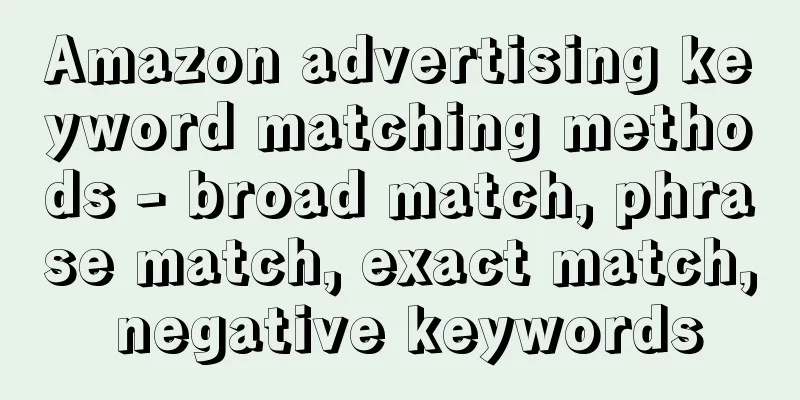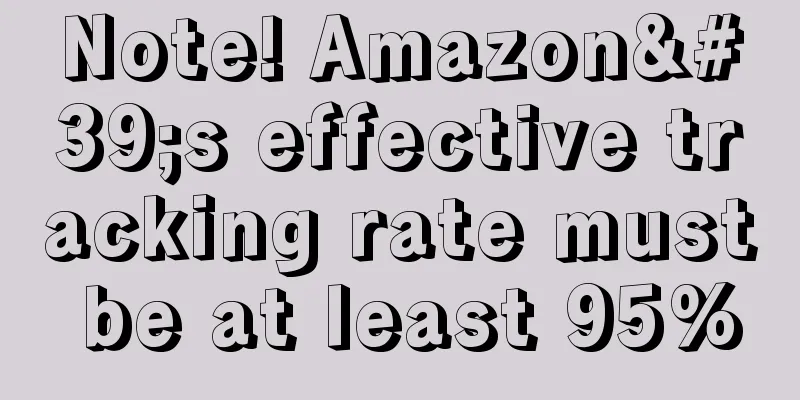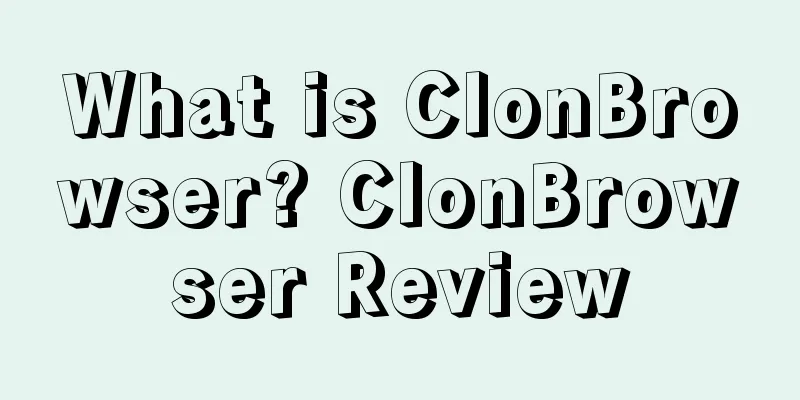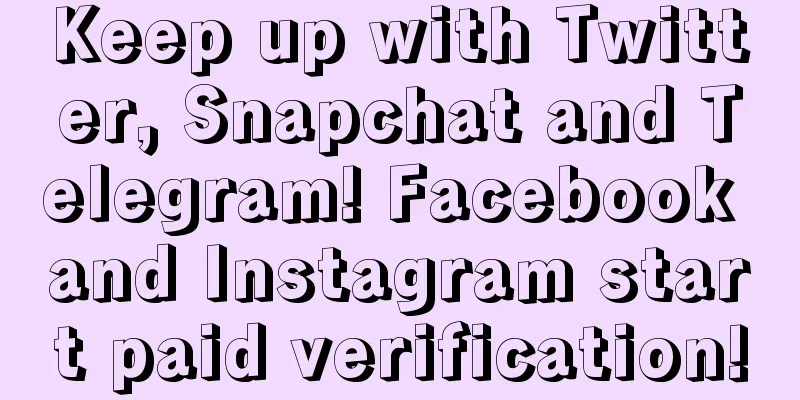Amazon advertising keyword matching methods - broad match, phrase match, exact match, negative keywords

|
We know that in Amazon advertising, there are often three word matching methods for manual advertising, Broad Match, Phrase Match and Exact Match. These three methods are usually called broad match, phrase match and exact match. So what are the specific differences between them? 1. Broad Match Broad Match means showing your ads to users on a broad basis. If you set a broad match method, it means that your products will be displayed when customers search with the terms you set. When customers search with terms related to your keywords, your ads will also be displayed. This may include synonyms, misspellings, variant forms, plural words, and words in the order of words, etc. For example, under the broad match setting, if you set the word Men's Watch, your products will be displayed in the search results when customers search for Men's Watch, Men's Watches, Man's Watch, Men Watches, Watch Men, etc. On the other hand, when customers search for the word Watches, your ads will also appear in the display results, but you must know that the needs of customers searching for the word Watches may not be clear, and for a buyer with unclear needs, it may cause invalid clicks on your ads. From this we can see that if the advertising keywords are set as broad matches, then the traffic will be much greater, but if the words you set at this time are big words, then it may also introduce a lot of invalid traffic, wasting the advertising in vain. Therefore, before using broad match, we need to consider the purpose of word testing, is it to accumulate data or to control ACoS? If it is to accumulate data, then the seller's BID value should not be too low, because the higher the BID value of broad match, the wider the advertising coverage will be, and the more words will be tested, so the BID value must be slightly higher than the recommended bid. If it is to control ACoS, the BID value can be slightly smaller, and Amazon's recommended bid can be used. Even if the traffic coming in through keyword clicks is too large and the cost is too high, it is okay to be lower than the recommended price, and the result is that the range of words tested will be smaller. Broad match can bring a lot of traffic, but it also brings bad consequences. A lot of junk traffic cannot be converted, which leads to a decrease in the weight of the listing. Many sellers are worried about this situation, so they will not start advertising from broad match, but directly start from phrase match, because it measures phrase traffic more accurately. 2. Phrase Matching Phrase Match allows you to narrow down your target search terms to specific phrases. A typical feature of phrase match is that it allows you to control the order of words. The words that buyers search for need to be partially consistent with the words you set. That is, phrases and their close variations. Compared with broad match, this type of match is more restrictive and usually displays the seller's ads in more relevant positions. Phrase match includes one-to-one matching, misspellings, synonyms, plural forms, participles, and close variations. For example, if you set Men Watch, and the phrase match method is used, if the customer searches for the term Fashion Men Watch, your ad will be displayed in the search results. However, if the buyer adds a word in the middle of Men Watch, the seller's ad will not appear. If the positions are swapped, the buyer will not match the seller's ad when searching for Watch Men. From this, it can be seen that phrase matching is to match around a root word, and its traffic is much more accurate than broad matching. Therefore, if the seller has a particularly accurate grasp of the core root word of the product, he can directly choose phrase matching. However, it is important to note that if the seller is selling an iPhone X Case, but only puts in the phrase "iPhone X Case", then the seller needs to think about whether the customer group will search for Case iPhone X, because if so, the seller's ad will not be displayed. Therefore, in addition to understanding phrase matching, sellers also need to understand the keyword word order of the product, understand what keywords customers will use to search for the product, and which word order will be used more frequently. If the frequency of use of certain word orders is average, sellers need to decide whether to use them according to their needs. If the seller wants to cover a more comprehensive range, then it is necessary to consider whether to change the position of phrase matching, because phrase matching emphasizes the order of words. Therefore, when the advertisement is optimized to a certain extent, phrase matching is the core of the seller's attention, because the traffic range of phrase matching is very accurate, and the seller only needs to control the core word root of the product. 3. Accurate Matching Exact Match is a complete, one-to-one match and close variants (including singular and plural, misspellings, and participle forms). The buyer's search query must match the keyword word order exactly for the ad to appear, and it will also match variations that are close to the exact keyword. Exact Match is the most restrictive match type, but its matching results are more relevant to the buyer's search. Exact match traffic is the most accurate. For example, if an ad is exactly matched to Boy Shoes, users need to search for Boy Shoes or similar variations to see the ad. Many people think that only keywords with precise matching can bring economic benefits to sellers, so sellers should directly invest in precise matching. Is this actually the case? Take the keyword Boy Shoes as an example. If Boy Shoes is set to broad matching, the traffic range may be 1000; if it is set to phrase matching, the traffic range may be 100; if it is set to precise matching, there may be only 1 traffic. In other words, the order volume brought by the main word of precise matching is limited. Sometimes the keywords that bring more orders are often some long-tail words. So, when should we set up precise matching? It is best to extract precise matching from broad matching and phrase matching, and then place precise matching by extracting keywords with a certain conversion rate. Therefore, the three advertising matching methods are not limited to using only one type of advertising. Sellers can combine the three methods based on their products, keywords, and operational needs. 4. Application of Negative Keywords There is an option in the delivery settings of on-site PPC ads - Negative Keywords. Many sellers do not pay attention to this item during the advertising delivery and optimization process, and some sellers know about it but do not know how to use it. So what does Negative Keywords mean for advertising operations? How can it help our actual operations? Negative Keywords can help sellers eliminate invalid keywords based on the specific conversion conditions of each keyword in the advertising data report during the advertising operation, and optimize product positioning, so as to better save advertising costs and improve advertising conversion rates. Therefore, setting and using Negative Keywords is also part of PPC advertising optimization. Whether it is manual advertising or automatic advertising, there is a section for setting negative keywords during the advertising plan setting process. First of all, we need to understand that in a manual advertising plan, each advertising keyword is added by the seller himself, so it is unnecessary to set negative keywords on the basis of manual addition. After setting up a manual advertising plan, during operation, as you gain a deeper understanding of the product and consumers, combined with the actual data from the advertisement, if certain keywords have poor effects, and after in-depth and careful analysis, these words are not highly relevant to your products, then you can directly delete (archive) these words. Of course, there are two basic bases for determining which advertising keywords to delete in a manual advertising plan: First, the keyword is not strongly relevant to the product or consumers. Second, the keyword’s ad was clicked more than 20 times but did not generate any orders. Next, let's talk about automatic advertising. In the automatic advertising plan, the system captures and matches the corresponding keywords based on the listing details (especially the title). However, the system cannot grasp the product information 100% accurately, so it will match some keywords that are irrelevant to the product. Although these irrelevant keywords will bring exposure and clicks, they will not generate orders. For sellers, this is invalid traffic, which not only wastes money, but may also lead to a decrease in conversion rate. Therefore, for such words that generate invalid traffic, we need to use negative keywords to negate them and block their possibility of being exposed and clicked. What kind of words can be added to the negative keyword list for negation? Generally speaking, there are two types: One is high exposure, high clicks, and low conversion; the other is high exposure, high clicks, and zero conversion. What kind of data should be used as a reference for "high clicks" here? We recommend that a single keyword should be clicked more than 20 times within a certain period of time. If the data is too small, such as three to five times, eight to ten times, etc., but no orders are generated, it is not recommended to directly deny it. However, the quantity indicator is only a reference. In addition to the number of clicks, sellers must also carefully consider the relevance of these words and their products, as well as whether they conform to consumer search habits and other factors. Only comprehensive considerations can avoid accidental damage. According to actual operational experience, there are two types of words that can be added to the negative keyword list: First, it is irrelevant to the product; second, it is a big word (broad keyword) with a certain relevance. In the Amazon system, two matching methods are provided for negative keywords: phrase negation and exact negation. When enabling negative keywords, which matching method should be used? Different from the matching method of adding keywords (precise keywords + broad matching), when we want to negate a word, it is recommended to use the precise negation method based on the above factors such as the number of clicks and relevance. Why? In daily life, when we judge someone, our appropriate attitude is to "judge the matter, not the person". The same is true for negating keywords. Negate keywords in a precise way to prevent the keywords from affecting too many people and missing out on potential effective traffic. Readers who often place ads and view advertising data reports may find that there are many other people's ASIN codes in the data reports, and some ASIN codes may even have a high number of clicks but may not generate orders. Can such ASINs be denied? The answer is NO. For the Amazon system, ASIN is a reflection of the associated traffic and traffic closed loop carefully created by Amazon. ASIN is not a keyword, it is indeed a special existence. Denying ASIN will not have any effect. So how do we deal with ASINs that don’t generate conversions? Our suggestion is that if there are quite a lot of ASINs in your advertising data report that are not related to your products, then you should go back to the listing optimization. Because your listing is so poorly written that the Amazon system does not accurately identify your product. (Collected from: Internet) |
>>: PPC Advertising Data Report Interpretation
Recommend
What is first-fors? first-fors review
First-fors is a professional cross-border home tex...
What is Teikametrics? Teikametrics Review
Teikametrics is an American advertising and market...
Several ways for Amazon sellers to obtain external traffic
Amazon is one of the largest e-commerce platforms...
What is Jet.com? Jet.com Review
Jet.com is a retail platform that sells products a...
Breaking news! A large number of sellers' shopping carts are lost...
Amazon Prime Day is scheduled for July, and the Eu...
Reasons why Amazon listings are turned into fakes for no reason and how to appeal
The full text has 1403 words and takes 7 minutes ...
What is EPC (Export Process Center)? EPC (Export Process Center) Review
EPC ( Export Process Center ) is an export process...
Walmart announces a significant reduction in clothing prices! It seems that it can't withstand the decline in performance
<span data-docs-delta="[[20,"获悉,据外媒报道,近日沃尔...
The United States has issued a new sanction! Those who transport banned items to Russia will be included in the trade blacklist!
It is learned that according to foreign media repo...
Cross-border industry is good! China-US tariffs usher in a turnaround
Recently, China and the United States held the th...
Meta's stock price has plummeted by more than 60% this year! Zuckerberg's net worth plummeted after Facebook changed its name
<span data-docs-delta="[[20,"今年Meta股价已暴跌超6...
USPS lost $1.7 billion in the third quarter, and the package volume decreased by 41 million pieces year-on-year
It is learned that recently, the United States Pos...
Trump may launch Tariff 2.0, which will have a profound impact on cross-border e-commerce!
As the day of Trump's return to the White Hous...
What is VAT (Value-added Tax)? VAT (Value-added Tax) Review
VAT (Value-added Tax) originated in France and is ...









